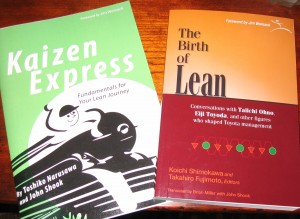 In early March, I joined 280 LEAN thinkers from 15 countries to attend the third annual Lean Transformation Summit, sponsored by The Lean Enterprise Institute (LEI).
In early March, I joined 280 LEAN thinkers from 15 countries to attend the third annual Lean Transformation Summit, sponsored by The Lean Enterprise Institute (LEI).
Having attended all three conferences, I give a standing O to LEI. This organization practices what it preaches—it follows the processes it advocates, including listening to the voice of the customer and making continuous improvements.
As someone who attends at least three national conferences a year and also does meeting planning for smaller groups, I can quickly identify the differences in how LEI runs its conferences. These positively contribute to the participants’ experience. For example:
- The speakers stay for the entire meeting and actively participate in breakout sessions, networking breaks and the receptions. The enthusiasm the speakers have for learning from each other is infectious. It’s also such a contrast to so many other conferences in which the speakers scoot off the stage at the end of their talk and run down the aisles with their laptop, luggage and other gear practically trailing them. Learning is a key tenet of LEAN, and it’s great to see the speakers model it so well.
- The sessions are engaging, with a mix of lectures, small group work, questions and answers, and demonstrations. People pay attention and interact with others. You hardly see anyone checking his or her smart phone, except during the breaks. You want to be present, taking in the content, as well as being respectful to the presenters and facilitators.
- The pacing works for people, not horses. Each session is just 45 to 60 minutes long. Breaks are 30minutes to encourage networking. The speakers start on time and end on time. You probably could set your clock on their schedule. (Unlike one of my clients, who for some odd reason believe that if they start the meeting 10 minutes late they can end it 10 minutes late and still use their full time allotment, not recognizing that some meeting participants
have other places to go and things to do.)
- LEI provides fun, yet functional, tools to participants. This year was a Flip video camcorder; last year was an iPod nano loaded with the presentations. This year, our homework assignment was to use our Flips to record sessions we wanted to share with our colleagues back home. And then once we were home, to take movies about our work that we want to share with the LEAN community. We also received the books, The Birth of Lean, and Kaizen Express, Fundamentals for Your Lean Journey.
- Continuous improvement is another tenet of LEAN, and LEI also practices what it preaches in this area. For example, this year the program featured more breakout topics on a broader array of issues, including change management and the development of LEAN managers. These two topics appealed to me, as well as the increased number of HR and OD experts the conference has started to draw. We’re still a tiny minority as the conference tends to attract engineers and project managers who work exclusively in LEAN.
Also this year, the conference acknowledged the turbulent times we work in. In the introductory remarks, the conference host didn’t hide the downturn in attendance this year—280 compared to 330 last year, representing 15 countries compared to 21 last year—still very respectable numbers. The program also featured sessions designedfor these times. For instance, one session was “Lean-er Thinking for Harder Times.” The keynote was “The Role of Lean Management in Tough Economic Times.”
As for some of the LEAN lessons learned from this summit, read Preventing Fires with LEAN Leadership on Communitelligence. Also the April issue of my free monthly eNewsletter, The LEAN Communicator, coming out in early April, will feature more learnings.
Meanwhile, think LEAN about your meetings and conferences. What can you do to make sure your participants value their meeting experiences and want to keep coming back for more?

0 Comments